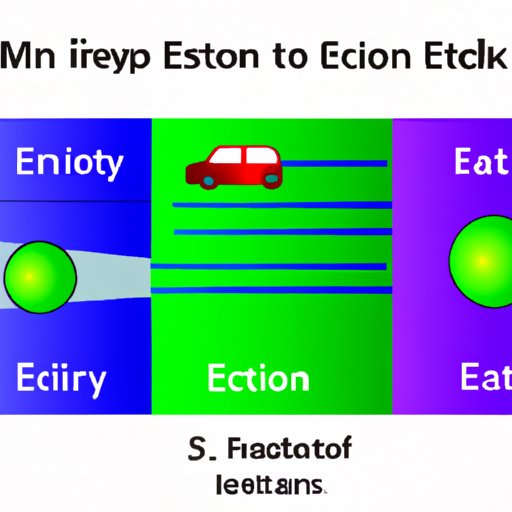I. An Overview of Acceleration in Science
Acceleration is a fundamental concept in the field of science, as it is used to explain the motion of objects. It is defined as “the rate of change of velocity with respect to time” and can be expressed as a vector quantity. In other words, acceleration is the rate at which an object’s speed changes over time.
There are several causes of acceleration, including external forces such as gravity, friction, and air resistance. Internal forces such as pressure and tension can also cause acceleration. Additionally, there are different types of acceleration, including constant acceleration, variable acceleration, and uniform acceleration.

II. Exploring the Physics Behind Acceleration
Isaac Newton’s three laws of motion form the basis for the physics behind acceleration. According to the first law, an object will remain at rest or continue in a straight line unless acted upon by an external force. The second law states that the acceleration of an object is directly proportional to the force applied and inversely proportional to the mass of the object. Finally, the third law states that for every action, there is an equal and opposite reaction.
Force is determined by multiplying the mass of the object by its acceleration, while the calculation of acceleration requires knowledge of both the initial and final velocities, as well as the time interval between them. This equation can be expressed as: a = (vf – vi) / t, where a is the acceleration, vf is the final velocity, vi is the initial velocity, and t is the time interval.

III. Acceleration: The Basics of Motion and Forces
Kinetic energy is a form of energy associated with the motion of an object. It is calculated by multiplying the mass of the object by its velocity squared and dividing by two. Momentum is the product of an object’s mass and velocity, and is conserved when forces are balanced.
Work is the transfer of energy from one object to another through a force, and is calculated by multiplying the force and the distance moved. Potential energy is stored energy that can be released when an object moves, such as when a rock falls off a cliff.
The conservation of energy states that energy cannot be created or destroyed, but can only be converted from one form to another. This means that, while energy may be transformed, the total amount of energy remains the same.

IV. Acceleration in Action: Examples from Everyday Life
Walking and running are common examples of acceleration in our everyday lives. When walking, the body accelerates in order to move forward, while when running, the body accelerates even more quickly in order to increase speed.
Riding a bicycle involves acceleration as well. As the cyclist pedals, the bike accelerates forward due to the force generated by the rider’s legs. Similarly, when driving a car, acceleration is required in order to move forward.
V. Acceleration: How It Affects Us in Our Daily Lives
Acceleration can have a significant impact on safety and performance. For example, sudden acceleration can cause a vehicle to skid or spin out of control, making it important to maintain control of the vehicle at all times. Additionally, acceleration can affect the performance of athletes, as it is necessary to accelerate quickly in order to reach top speeds.
Finally, acceleration can have a significant effect on our health and wellbeing. Sudden acceleration can cause dizziness, nausea, and fatigue, while prolonged acceleration can lead to muscle strain and injury. It is therefore important to pay attention to how acceleration affects us in our everyday lives.
(Note: Is this article not meeting your expectations? Do you have knowledge or insights to share? Unlock new opportunities and expand your reach by joining our authors team. Click Registration to join us and share your expertise with our readers.)
